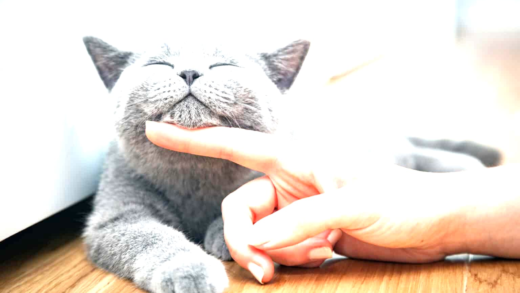Tortoiseshell and calico cats have unique traits and care requirements. While both types are predominantly female, tortoiseshell cats often have a more independent personality, while calico cats are generally more sociable. Their distinctive coat colors arise from genetic factors, and these patterns can be found in various breeds, although they are most common in domestic shorthairs. Many myths, such as their temperament and gender, have been debunked, revealing the true charm of these beautiful felines.
Tortoiseshell vs. Calico: What’s the Difference?
Tortoiseshell and calico cats are often confused due to their similar color patterns, but they are distinct in several ways. The main difference lies in their color distribution and genetic background. Tortoiseshell cats feature a blend of orange and black (or cream and chocolate) fur, creating a mottled appearance. Calico cats, on the other hand, have a tri-color pattern that includes white along with orange and black. This white fur is a key distinguishing factor.
Here’s a quick breakdown of their differences:
- Tortoiseshell: Primarily orange and black, no white fur.
- Calico: Orange, black, and white fur present in patches.
Understanding these differences can help cat owners identify their pets correctly and appreciate the unique beauty of each type. Both types are predominantly female due to their genetic makeup, making them special in terms of breeding and care.
Identifying a Tortoiseshell Cat: Key Features
Identifying a tortoiseshell cat is straightforward once you know what to look for. Tortoiseshell cats display a distinctive coat that combines black and orange or cream colors in a patchwork pattern. Unlike calico cats, they lack white fur, making their appearance more uniform yet striking.
Key features include:
- Color Pattern: A mix of orange and black in a random pattern.
- Fur Texture: Fur can be short or long, depending on the breed.
- Eye Color: Often bright and vivid, adding to their striking looks.
In addition to their physical traits, tortoiseshell cats often have unique personalities, which may be influenced by their vibrant coats. Their distinctive look makes them stand out in any crowd.
What Does a Calico Cat Look Like?
A calico cat is easily recognized by its beautiful tri-color coat. The presence of white fur is a major characteristic that sets calico cats apart from tortoiseshell cats. A typical calico coat features patches of orange, black, and white, creating a vibrant and eye-catching appearance.
When observing a calico cat, consider the following traits:
- Color Distribution: A mix of orange, black, and white fur in patches.
- Pattern Types: Can vary from classic (large patches) to diluted (softer colors).
- Body Shape: Similar to other cats, but their color patterns can highlight unique body features.
The beauty of calico cats not only lies in their colors but also in their unique personalities. Often described as spirited and playful, calico cats bring joy to their owners.
Personality Traits of Tortoiseshell Cats
Tortoiseshell cats are known for their unique personalities, which often mirror their vibrant coats. Many owners report that tortoiseshell cats exhibit strong-willed and independent behaviors. These cats tend to be quite affectionate but also have a feisty side, making them playful and sometimes a bit unpredictable.
Some common personality traits include:
- Spirited: Tortoiseshell cats often have a playful and energetic disposition, enjoying interactive play.
- Affectionate: They typically form strong bonds with their human companions, seeking attention and cuddles.
- Vocal: Many tortoiseshells are known to be quite chatty, expressing their needs and opinions vocally.
- Curious: Their inquisitive nature leads them to explore their surroundings, often getting into mischief.
Understanding these traits can help potential owners decide if a tortoiseshell cat is the right match for their home. Their unique personalities add to their charm, making them beloved companions.
The Science Behind Their Colors: Tortoiseshell and Calico
The distinct coloring of tortoiseshell and calico cats is a fascinating result of genetics. The colors arise from the X chromosome. Female cats have two X chromosomes, which allows for the combination of colors seen in tortoiseshell and calico patterns. Male cats, having one X and one Y chromosome, are less likely to display these color patterns.
Key points about the science of their colors include:
- Color Genetics: Tortoiseshell cats exhibit a mix of orange and black due to the random inactivation of one X chromosome in each cell.
- Calico Pattern: Calico cats have the addition of white fur, resulting from a separate genetic factor that influences color distribution.
- Color Variations: Both tortoiseshell and calico can appear in diluted forms, featuring softer shades like cream and gray.
These genetic factors not only explain their striking looks but also contribute to the rarity of male tortoiseshell and calico cats. Understanding the science behind their colors enhances appreciation for these unique felines.
Genetic Backgrounds: Tortoiseshell vs. Calico
The genetic backgrounds of tortoiseshell and calico cats reveal intriguing differences. As mentioned, both color patterns are linked to the X chromosome, which plays a crucial role in their development. Tortoiseshell cats have a more straightforward genetic makeup, primarily influenced by the pigmentation genes on the X chromosomes.
Conversely, calico cats involve additional genetic factors that determine the presence of white fur. This means that while all tortoiseshell cats are essentially a mix of two colors, calico cats require the combination of three colors—orange, black, and white—to achieve their distinctive appearance.
In summary:
- Tortoiseshell: Typically female, resulting from the inactivation of one X chromosome.
- Calico: Also predominantly female, with an additional genetic factor for white fur.
These genetic distinctions not only impact their appearance but also their rarity, particularly in male cats. Understanding these differences aids in appreciating the complexities of their genetics and why they hold such a special place in the feline world.
Caring for Tortoiseshell vs. Calico Cats: Is There a Difference?
Caring for tortoiseshell and calico cats does not significantly differ, but there are nuances that cat owners should consider. Both types thrive on attention, proper nutrition, and regular vet visits. However, there are some aspects that might vary based on their personalities and behaviors.
For instance, tortoiseshell cats are often more independent and may require a different approach to training and socialization. Here are some tips for caring for each type:
- Nutrition: High-quality cat food is essential for both, but tortoiseshell cats may benefit from a diet that caters to their energetic nature.
- Socialization: Calico cats are generally more social and may enjoy interactive playtime with their owners. Tortoiseshells might prefer solo play.
- Grooming: Both may require regular brushing, especially if they have long fur. Pay attention to any specific grooming needs based on their coat type.
Understanding the subtle differences in care can enhance the well-being of both tortoiseshell and calico cats, ensuring they lead happy, healthy lives.
Why Are Tortoiseshell and Calico Cats Considered Special?
Tortoiseshell and calico cats hold a special place in the hearts of many cat lovers. Their unique color patterns and personalities contribute to their charm. One reason they are often considered special is their rarity; male tortoiseshell and calico cats are extremely uncommon due to genetic factors. This rarity adds to their allure.
Furthermore, many owners report that tortoiseshell and calico cats tend to have distinct personalities. Here are a few reasons why they stand out:
- Colorful Personalities: Owners frequently describe them as spirited, affectionate, and sometimes a bit sassy.
- Unique Appearance: Their vibrant coats attract attention and admiration, making them visually striking companions.
- Mythical Status: Many cultures view these cats as symbols of good luck, further enhancing their special status.
These factors combine to create a unique bond between tortoiseshell and calico cats and their owners, making them cherished family members.
Can You Find Tortoiseshell and Calico Cats in All Breeds?
Tortoiseshell and calico color patterns can be found in various cat breeds, although they are most commonly associated with domestic shorthairs. Breeds such as the American Shorthair, British Shorthair, and Maine Coon can also exhibit these stunning colors. However, the prevalence of these patterns may vary among breeds.
It’s essential to note that while tortoiseshell and calico cats can appear in many breeds, not all breeds will have these colors. Here are some breeds where these patterns are more frequently seen:
- Domestic Shorthair: The most common breed for these color patterns.
- Maine Coon: Known for their large size and friendly disposition, they can also have tortoiseshell or calico coats.
- American Shorthair: Another breed where these colors are prevalent.
In summary, while tortoiseshell and calico cats can be found across various breeds, they are primarily associated with domestic shorthairs.
Myths About Tortoiseshell and Calico Cats: What’s True?
Many myths surround tortoiseshell and calico cats, often perpetuated by their unique appearances and personalities. One common myth is that tortoiseshell and calico cats are always female, which is mostly true, but not exclusively. Male tortoiseshell or calico cats do exist, although they are rare due to their genetic makeup.
Another myth is that these cats are particularly temperamental or possess superstitious qualities. In reality, their personalities vary widely, just like any other cats. Here are some prevalent myths and the truths behind them:
- Myth: All tortoiseshell and calico cats are female.
Truth: Male cats can be tortoiseshell or calico but are very rare. - Myth: They are all bad-tempered.
Truth: Their temperaments vary, and many are affectionate and friendly. - Myth: They bring bad luck.
Truth: Many cultures view them as lucky charms.
Understanding these myths can help potential owners appreciate tortoiseshell and calico cats for their unique traits and dispel any misconceptions.





Comments are closed.